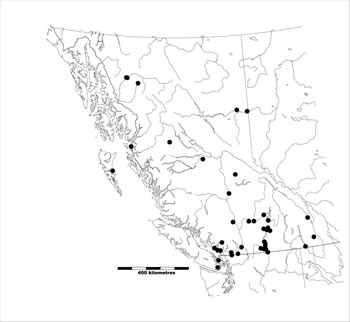House Mouse
Family: Muridae
Introduction
|
Status Information
|
BC Ministry of Environment: BC Species and Ecosystems Explorer--the authoritative source for conservation information in British Columbia. |
Taxonomic and Nomenclatural Links
Additional Range and Status Information Links
Additional Photo Sources
Species References
|
Carl, G. Clifford and C. J. Guiguet. 1958. {i{Alien Animals in British Columbia. British Columbia. Provincial Museum, Department of Education, Handbook No. 14. Victoria, BC.
Nagorsen, David W. 2005. Rodents and Lagomorphs of British Columbia. Royal BC Museum Handbook. Royal BC Museum, Victoria. |
